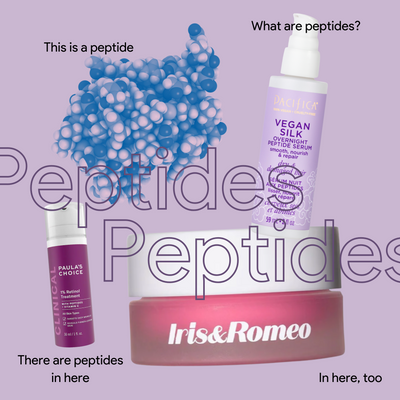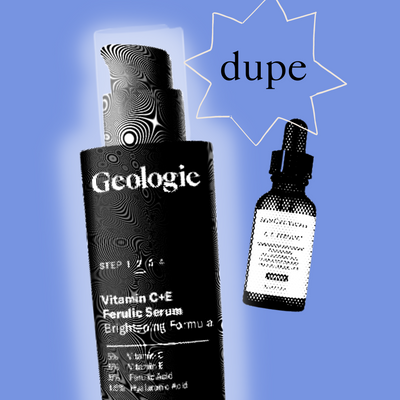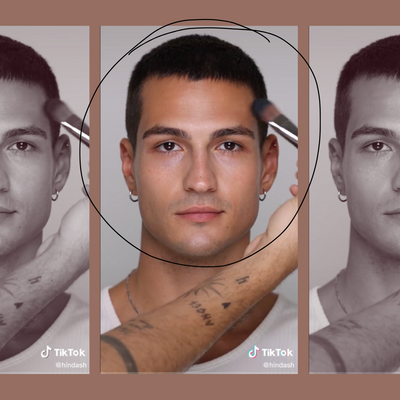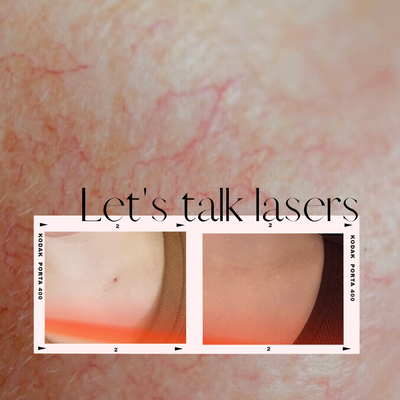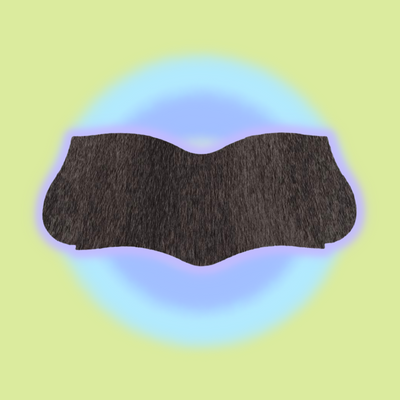Even something as simple as putting on makeup can bring on a rosacea flare-up.
The friction from a makeup brush or beauty blender gliding across your face when you have rosacea has been something my sister complained about for years. While I don’t exactly have rosacea myself, it does run in my family, and I’ve listened in on countless conversations about how the condition changes with the weather. Rosacea is known to be somewhat hereditary and I have seen minor warning signs within my own skin (broken capillaries from time to time, skin becoming flush when drinking, etc.).
SEE ALSO: How to soothe summer eczema
With temperatures heating up, I thought it would be best to find out more about how to handle summer rosacea. Hot and sticky weather isn’t the best for any skin condition rooted in irritation and inflammation. I turned to Dr. Iris Rubin, a board-certified dermatologist and founder of SEEN Hair Care for some advice on how to manage summer rosacea. Read on for answers to all your questions about rosacea, and to learn best practices for dealing with it in the summertime.
What exactly is rosacea and how does one develop it?
Rosacea is a common skin condition that normally occurs on the cheeks and around the nose. It can appear as facial redness, broken blood vessels, and/or flushed skin. It can even look like acne breakouts. Dr. Rubin says while the condition still isn’t fully defined, rosacea can be hereditary and run in families.
“Rosacea has been theorized to be due to an overzealous immune response, and overproduction of cathelicidin in facial skin, a protein that protects the skin from infection and can cause redness and swelling,” she tells Very Good Light.
How many types of rosacea are there and what are the defining characteristics?
There are four main types, or rather, symptoms of rosacea that individuals can experience.
1. Facial redness, flushing, and broken blood vessels (capillaries)
2. Acne-like breakouts with serious inflammation
3. Skin thickening, causing a bumpy texture (Dr. Rubin says this is almost always around the nose and referred to as ‘rhinophyma’)
4. Ocular rosacea, resulting in red and irritated eyes most often resulting in swelling
Besides family history, Dr. Rubin says, “Fair-skinned people are more likely to have rosacea. It affects women more than men, and typically occurs in people ages 30-50.”
What are the triggers for rosacea flare-ups?
As always, triggers can be different for everyone. Especially since there are many different responses your skin can show when you have rosacea. Sun and wind exposure are big triggers for people with rosacea. Temperature extremes including heat, alcohol (Dr. Rubin says especially red wine), spicy food, stress, and medications can also trigger rosacea – along with makeup and skincare, of course.
What types of products should you stay away from if you have rosacea?
In terms of skincare, Dr. Rubin says to be vigilant when it comes to looking at ingredients. Alcohol and fragrances within products can be highly irritating. It’s best to opt for things like alcohol-free toners and fragrance-free cleansers and moisturizers.
If you’re finding yourself experiencing any redness, it’s a trigger. So definitely stay away from The Ordinary’s Peeling Solution –and rosacea sufferers, THAT is an order.
Dr. Rubin notes people often forget about how haircare can affect your skin and certainly trickle down onto your face.
“Haircare products can affect the skin, leaving an invisible film on your face as shampoo and conditioner rinse down in the shower. Even leave-in products can transfer from your hair, towel, or pillowcase to your skin,” says Dr. Rubin. It’s best to always wash your face and body after washing your hair in the shower to avoid leaving any film or irritants behind from shampoo or conditioner. This is especially important if you have body acne, as well.
What are the best practices, solutions, and/or products to keep rosacea in check over the summer?
Heat, humidity, and sun exposure are the biggest potential triggers in the summertime. Dr. Rubin says sun protection is KEY. Wear a hat, use SPF 30 or higher, and be sure to reapply. Seeking shade whenever possible is in your best interest. For summer rosacea sufferers, physical sunscreens are preferred over chemical sunscreens.
“Do your best to stay cool, make sure to have cold water available. You can even mist your face with cool water. And if you exercise outside, try to do it early morning or early evening when it’s not as hot,” says Dr. Rubin.
TLDR;
– Heat, humidity, and sun exposure are inevitable in the summer if you have rosacea
– Know how your rosacea responds and what may be your top triggers (i.e. heat, food, alcohol, and/or skincare)
– Aim for skincare and haircare that is non-irritating, fragrance-free, and doesn’t contain alcohol
– Keep a gentle face mist or cold water around to spritz yourself. VGL recommends the SOS Daily Rescue Facial Spray from Tower 28 to reduce inflammation and keep your skin cool
– Opt for a physical sunscreen over a chemical sunscreen


